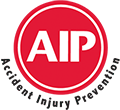Mobile elevating work platforms (MEWPs) are essential tools in various industries, enabling workers to reach elevated heights and perform tasks efficiently. However, they can also pose significant safety risks if not operated and maintained correctly.
Preventing accidents involving MEWPs is of utmost importance to safeguard lives and create a secure work environment. In this article, we will explore ten crucial steps to prevent common mobile elevating work platform accidents, including precautions and taking necessary mobile elevated work platform training.
The Most Common Mobile Elevating Work Platform Accidents
Mobile elevating work platform (MEWP) accidents can occur due to various factors, and some of the most common accidents include:
- Overturning - One of the most frequent accidents involves MEWPs tipping over due to improper use or unstable ground conditions.
- Entrapment - Workers can get trapped between the platform and overhead obstacles or structures, leading to serious injuries or fatalities.
- Falls from height - Falls from the elevated platform are a significant cause of accidents, often resulting from a lack of fall protection or secure harness usage.
- Electrocution - Accidental contact with live electrical wires while operating the MEWP can cause severe electric shock or electrocution.
- Collision with objects - MEWPs can collide with other equipment, structures, or objects on the worksite, leading to accidents and damage.
- Platform overloading - Overloading the platform beyond its weight capacity can lead to platform failure or collapse.
- Mechanical failures - Equipment malfunctions, hydraulic system failures, or brake issues can result in accidents and injuries.
- Inadequate training - Accidents can occur when operators are not adequately trained in operating the MEWP safely and efficiently.
- Weather conditions - Adverse weather conditions, such as high winds or slippery surfaces, can contribute to accidents.
- Improper use - Failing to follow manufacturer guidelines, using the MEWP for tasks it's not designed for, or using it on uneven terrain can lead to accidents.
How to Prevent Mobile Elevating Work Platform Accidents
Preventing these accidents requires proper training, adherence to safety protocols, regular equipment maintenance, and a thorough understanding of the operational limitations of the MEWP. Employers and workers must prioritize safety to ensure a safe working environment when using elevating work platforms.
1. Comprehensive training - Thorough training is the foundation for safe MEWP operation. Employers must provide comprehensive training to all operators, covering equipment familiarity, safety procedures, emergency protocols, and proper usage. Regular refresher courses should be conducted to reinforce safety practices and address any updates in regulations.
There are different types of training, depending on your requirements at work, including:
- Energy Safety Canada Mobile Elevated Work Platform
- Scissor Lift Training
- Boom & Scissor Lift Combined Training
2. Conduct pre-operational inspections - Before using a MEWP, operators should conduct pre-operational inspections to check for any defects or malfunctions. This inspection should include examining structural integrity, hydraulic systems, brakes, and safety devices. Only when the MEWP passes the inspection should it be used for work.
3. Assess ground conditions - Ensuring stable ground conditions is crucial to prevent tipping or overturning accidents. Operators should assess the terrain for potential hazards such as slopes, holes, debris, or unstable surfaces. When uncertain about the ground conditions, the operator should consult with a supervisor or site engineer before elevating the platform.
4. Implement fall protection - Falls from the platform are a common cause of MEWP accidents. Operators should wear appropriate personal protective equipment (PPE), including a harness with a lanyard securely attached to the designated anchor points on the MEWP. Additionally, guardrails or other fall protection systems must be in place.
5. Avoid overloading - Exceeding the maximum load capacity of the MEWP can lead to structural failure or instability. Operators should carefully consider the combined weight of occupants, tools, and materials before elevating the platform. The equipment's load capacity should never be compromised.
6. Maintain safe distances - Maintain a safe distance from overhead obstacles, power lines, and other structures to prevent entrapment accidents. Being aware of the platform's height and surroundings is vital to avoid collisions and entanglements.
7. Monitor weather conditions - Adverse weather conditions, such as high winds, rain, or snow, can compromise the stability of the MEWP. Operators should check weather forecasts and avoid operating the platform outdoors during unsafe conditions.
8. Proper equipment use - MEWPs are designed for specific tasks and have operational limitations. Operators should strictly adhere to the manufacturer's guidelines and never use the equipment for purposes beyond its design specifications.
9. Communication and signage - Effective communication among workers is crucial to avoid accidents. Use clear hand signals, two-way radios, or other communication devices when directing the MEWP's movement. Proper signage and barricades should also be employed to alert others to the work area.
10. Emergency preparedness - Lastly, always have a well-defined emergency response plan in place. This plan should include procedures for dealing with equipment malfunctions, injuries, or any other emergencies that may arise during MEWP operations.
Minimize Workplace Accidents & Create a Safe Environment
At AIP Safety, our comprehensive training courses are designed to equip operators with the knowledge and skills needed to safely operate MEWPs. With experienced instructors, hands-on training, and up-to-date industry insights, our courses ensure that you and your team understand the best practices for accident prevention and response.
Don’t wait for accidents to happen - let’s work together to build a safe and more efficient working environment.

